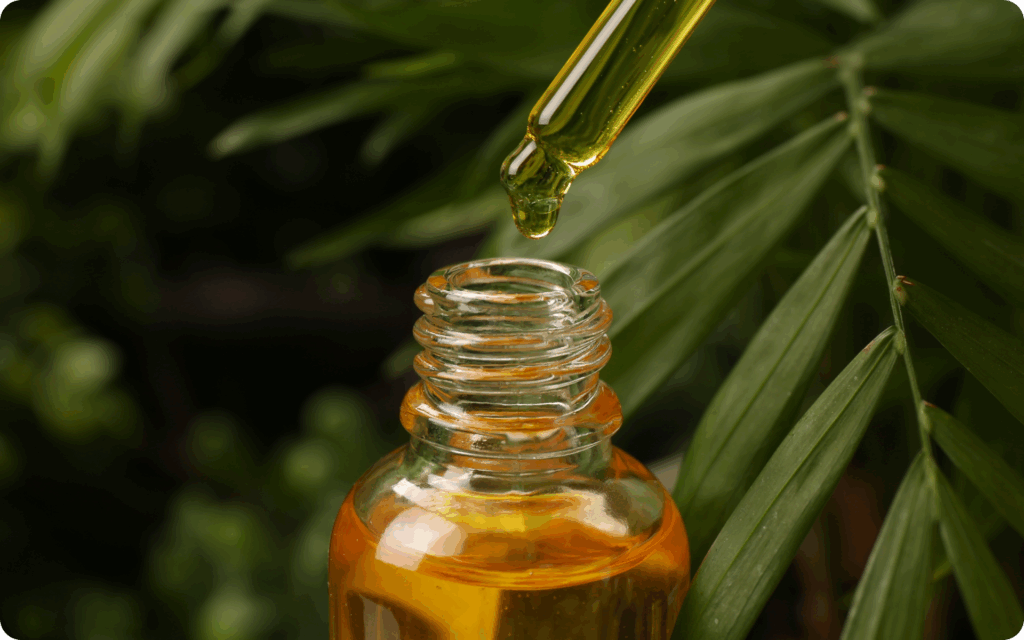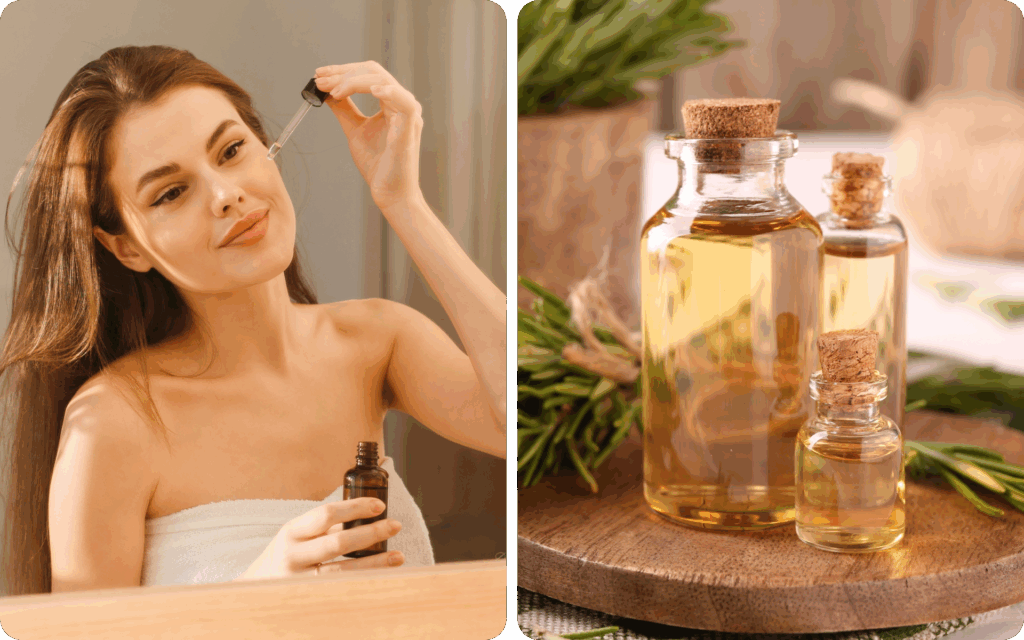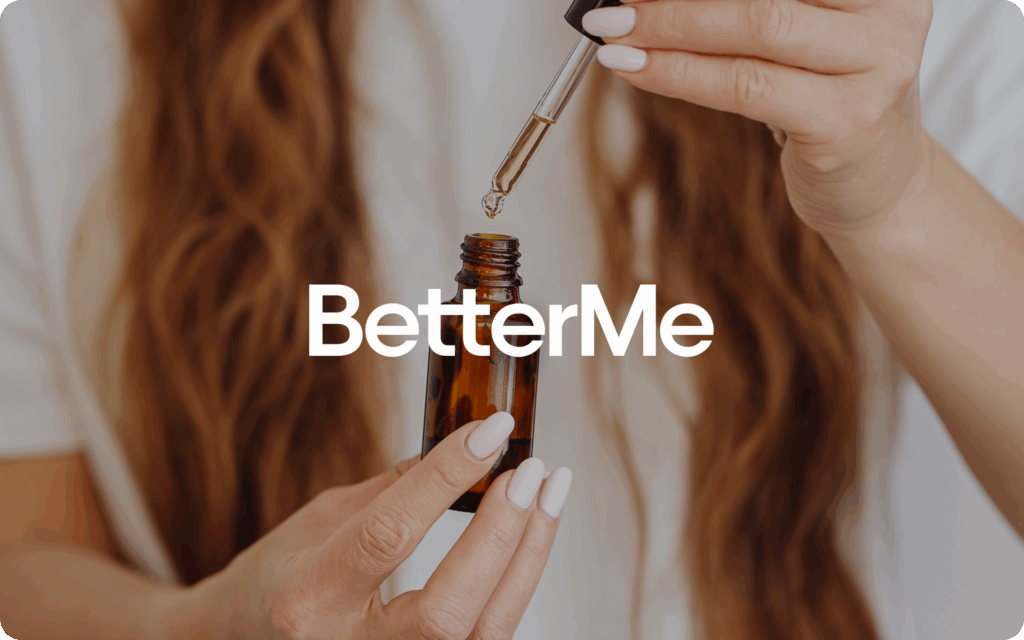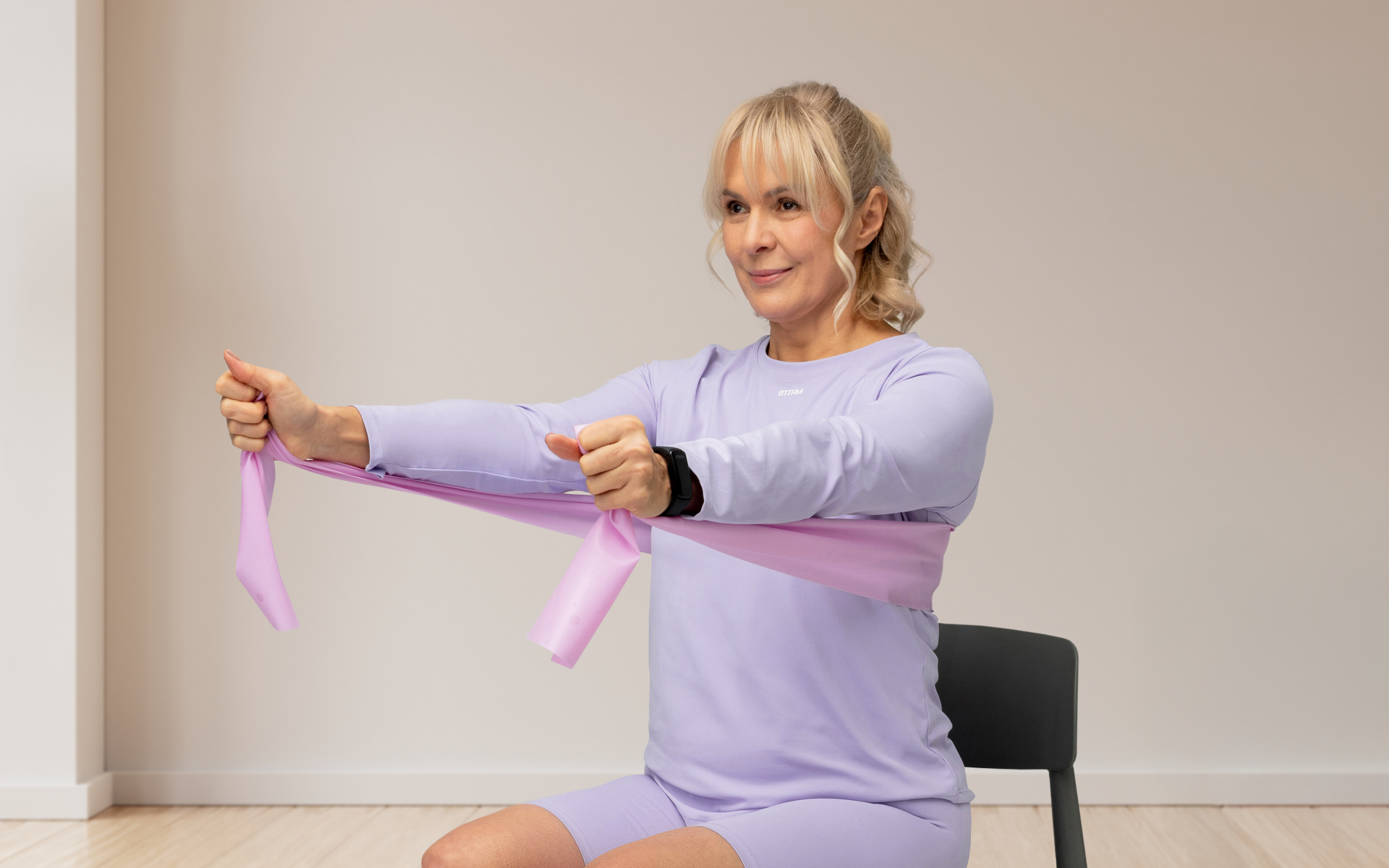Gua Sha is an ancient Chinese healing technique used to release toxins from the body and promote the free flow of healthy energy.
Multiple studies have shown that this practice can help reduce inflammation, improve circulation, and even decrease the appearance of wrinkles (1).
While a professional typically performs full-body Gua Sha treatments, there are several ways to conduct smaller Gua Sha sessions at home.
No wonder facial Gua Sha is becoming an increasingly prevalent part of people’s skincare routines. However, to fully reap the benefits of this practice, it’s essential to select the right oil for your Gua Sha session.
Do I Need to Use Oil With Gua Sha?
Yes, it’s advisable to use facial oil with Gua Sha.
Here are some reasons why:
- It Helps The Tool Glide Easily
Facial oil can help reduce friction when using the Gua Sha tool, making it easier to massage your face and get into all the nooks and crannies that need attention.
- It Provides Nourishment And Hydration
Facial oil can help the skin absorb moisture, thereby increasing hydration levels and reducing the appearance of wrinkles (2).
- It Provides A Barrier Between The Tool And Your Skin
Using facial oil helps create a protective barrier between the Gua Sha tool and your skin, thereby reducing the potential for irritation or damage.
- It May Address Specific Skin Concerns
Different facial oils help maintain a strong skin barrier and reduce oxidative stress.
Both may cause skin issues, such as dryness, inflammation, or acne (3).
- It Adds Extra Massage Benefits
Not only can facial oil help reduce friction during your massage session, but certain essential oils have additional health benefits that can further enhance your Gua Sha session.
Botanical facial oils containing antioxidant-rich ingredients, such as rosehip, jojoba, and evening primrose, have been shown to help protect the skin from UV-induced oxidative stress, a key factor in environmental skin damage and premature aging (3).
Read more: The Benefits of Matcha: How It Boosts Energy, Supports Skin And Enhances Health
What Type Of Oil Is Best For Gua Sha?
Here’s a list of some of the most popular oils used with Gua Sha (and why they’re great for your skin):
Jojoba Oil
Jojoba oil is non-comedogenic, so it won’t clog pores or cause breakouts.
Its light texture absorbs quickly, leaving skin soft and never greasy. Rich in vitamin E and other antioxidants, it helps protect the skin from sun damage and supports overall skin health (4).
BetterMe: Health Coaching app helps you achieve your body goals with ease and efficiency by helping to choose proper meal plans and effective workouts. Start using our app and you will see good results in a short time.
Rosehip Oil
Rose Hip Oil is rich in antioxidants and essential fatty acids, which can help hydrate skin, calm inflammation, and may support collagen production (5). Rosehip is also light enough that it won’t leave a greasy residue behind after your Gua Sha session.
Argan Oil
Argan oil is rich in vitamin E and fatty acids, which can help nourish and soften the skin.
It also has anti-inflammatory properties that may support skin health (6).
Argan oil can help moisturize the skin and support overall skin health, but it may not significantly improve the appearance of acne scars or stretch marks (6).
Sweet Almond Oil
This light oil is ideal for Gua Sha because it leaves no greasy residue behind.
Almonds are rich in vitamin E and fatty acids, and regular consumption may help reduce the severity of wrinkles in postmenopausal women (7).
Apricot Kernel Oil
Apricot kernel oil is rich in vitamin E and healthy fatty acids, which help protect the skin from damage caused by free radicals. Its natural oils act as an emollient, keeping skin soft, smooth, and hydrated. Because of these properties, apricot oil is widely used in skincare products to nourish and maintain healthy-looking skin (8).
Tamanu Oil
Tamanu oil is a natural, antioxidant-rich oil that helps protect the skin from free radicals and reduce inflammation (9).
It can:
- Support wound healing
- Soothe irritated skin
- Deeply moisturize dry areas.
Traditionally, our ancestors used the oil to help alleviate symptoms of acne, eczema, psoriasis, and other skin conditions. Tamanu oil may also improve the appearance of scars and stretch marks, making it a versatile addition to your skincare routine.
To make it easier to work with, you can combine tamanu oil with a lighter oil.
Sea Buckthorn Oil
Why sea buckthorn oil is excellent for your skin (10):
- Deeply nourishes and locks in moisture
- Supports skin elasticity and helps reduce fine lines
- Soothes redness and irritation for sensitive skin
- Helps manage acne, eczema, and psoriasis
- Packed with antioxidants for a healthy, glowing complexion
Grapeseed Oil
Grapeseed oil is a lightweight, antioxidant-rich oil with multiple skin benefits (11):
- Non-comedogenic: Won’t clog pores or cause breakouts.
- Rich in antioxidants and vitamin E: Helps protect skin from oxidative stress and free radical damage.
- Anti-inflammatory: Supports reduction of redness and irritation.
- Moisturizing: Helps maintain skin hydration and elasticity.
- Supports wound healing and skin repair: Promotes collagen formation, increases blood flow to damaged tissue, and accelerates tissue regeneration.
- May help fade dark spots and scars: Antioxidant compounds and polyphenols in grapeseed oil can aid in skin repair and improve skin tone.
Read more: Is Vitamin D Good For Your Skin? 7 Benefits You Need From The Sunshine Vitamin
Tips For Using Oil With Gua Sha
Don’t make the mistake of reaching for just any facial oil. Here are a few tips to consider when using oil with Gua Sha:
Know Your Essential Oils
The world of essential oils can be confusing and intimidating. Before using an essential oil, conduct thorough research to ensure its safety and effectiveness. Read up on the benefits of each oil, as well as any potential side effects.
Read about which brands are reputable and what the best practices are when using essential oils.
Read labels to ensure the product is pure and not a blend of different oils.
More importantly, read reviews from people who have used the oil to get a better idea of what you can expect.
Always Dilute Oils Before Use
Essential oils are concentrated plant extracts and can irritate the skin if used undiluted.
Always mix them with a carrier oil, like jojoba, almond, or grapeseed, before applying.
- A standard guideline is 10–15 drops per ounce of carrier oil, though this can vary depending on the oil and your skin’s sensitivity.
Properly diluted oils are generally safe for skin or inhalation, while internal use should only be done under professional guidance (12).
The American College of Healthcare Sciences recommends starting with a lower dilution ratio and gradually increasing it until you find the optimal balance for your skin (13).
Patch Test
Before using an essential oil on a large area, it is necessary to perform a patch test to ensure you don’t have an allergic reaction. To do this, apply a small amount of oil to the crook of your elbow and wait at least 24 hours.
If you experience any redness, itching, or other signs of irritation, it is best to discontinue use.
A patch test can also help you determine the ideal dilution ratio.
If your skin reacts positively to the oil, you can begin using it more liberally.
However, if you experience any irritation, try diluting the oil with more carrier oil, especially if you are using an oil that is known to be more potent.
Whether you’re a workout beast or just a beginner making your first foray into the world of fitness and dieting – BetterMe has a lot to offer to both newbies and experts! Install the app and experience the versatility first-hand!
Keep It Simple
When using oil with Gua Sha, the goal is to keep it simple.
You don’t need a long list of ingredients. Stick to 1-2 oils and use a light touch when applying them to your skin. The goal should be to nourish and soothe, rather than overwhelm the skin with excessive product.
Furthermore, a lengthy ingredient list makes it more challenging to identify which oils are causing the reaction if an allergic reaction occurs. Therefore, it is best to stick to a simple routine when using facial oils with Gua Sha.
Start Low And Slow
When starting with facial oils, it is best to begin slowly and gradually.
Start with a lower dilution ratio when applying the oil, and begin with a light touch when performing the Gua Sha technique. These steps will help avoid any unnecessary irritation or inflammation caused by the oils.
Keep your sessions to a max of 5 minutes, and gradually increase the time as you become more comfortable with the process.
Ensure you have rest days between Gua Sha sessions to allow your skin time to rest and rejuvenate.
Consider Pre-Mixed Oils
If you are a beginner or do not feel comfortable mixing your own essential oils and carrier oils, consider using a pre-mixed facial oil.
Several companies offer pre-formulated facial oils designed explicitly for Gua Sha, making it easier and less intimidating for first-time users.
However, make sure to read labels carefully and only purchase from reputable companies. Some pre-mixed facial oils may contain ingredients that are not suitable for your skin type, so it is essential to conduct thorough research before making a purchase.
We highly recommend performing a patch test, especially when using pre-mixed oils, as some individuals may be sensitive to specific ingredients.
The Best Gua Sha Technique For Face
Now that you know which oils to use and how to use them, it’s time to learn the best Gua Sha technique for your face.
Bear in mind that the point of Gua Sha is to stimulate circulation and promote lymphatic drainage (15). That means you need to use a firm but gentle touch in the direction of the lymph nodes.
Think of it as a massage, rather than a vigorous scrubbing motion. It should not feel painful or uncomfortable; if it does, you are using too much pressure or the wrong tool.
So first, choose the right Gua Sha tool.
Facial Gua Sha tools should be smooth and rounded, with no sharp edges or points that could scratch or irritate your skin.
The material should also be smooth and non-porous so it does not trap bacteria or dirt (Jade, rose quartz, and other natural stones are popular materials).
- To begin, apply a light layer of oil to your face and press the Gua Sha tool firmly against your skin in a sweeping motion, starting from the center and moving outward.
- Repeat this motion several times, ensuring you follow the natural contours of your face.
- Once you have finished the sweeping motion, change directions and sweep back towards the center. The reversed sweeping will help to increase circulation further and promote lymphatic drainage.
- Finally, move to smaller, more targeted areas such as the jawline, cheeks, and forehead. Be sure to use a light touch in these delicate areas.
Avoid These Mistakes When Performing Gua Sha
- Using Too Much Pressure
When using Gua Sha, it is essential to use gentle yet firm pressure to prevent any damage. If you feel pain or discomfort while performing the technique, it’s likely that you are using too much pressure and should reduce the intensity.
- Not Prepping Your Skin
It is crucial to prepare your skin for Gua Sha before performing the technique.
First, ensure that the skin is clean, then apply a light layer of oil.
This preparation will help reduce friction, ensuring the Gua Sha tool glides smoothly.
- Not Moving In The Right Direction
Perform Gua Sha by using gentle, consistent strokes in one direction.
Always move the Gua Sha tool in the same direction; never go back and forth.
Doing so can damage the skin, resulting in irritation and redness.
- Not Cleaning Your Tools Properly
When you finish using your Gua Sha tool, it is essential to clean it thoroughly.
Place the tool in warm, soapy water and scrub with a soft brush.
Alternatively, you can use a rubbing alcohol solution to disinfect the tool before and after each use.
- Overdoing it
It can be tempting to spend too much time on one area when performing Gua Sha, but it is essential not to overdo it. Overexertion of the rolling motion in one area can lead to bruising and other skin damage, so limit your Gua Sha sessions to no more than 15 minutes.
Should I Apply Oil Before Using Gua Sha?
Applying oil before using a Gua Sha tool is ideal.
The oil acts as a lubricant, allowing the tool to glide smoothly over the skin, which helps prevent irritation and provides a more comfortable experience.
If you’re considering using Gua Sha, it’s a good idea to choose an oil that suits your skin type and preferences.
What Can I Use Instead Of Oil With Gua Sha?
You can use several alternatives to oil with Gua Sha to ensure smooth gliding and prevent skin irritation.
Here are a few options:
- Serums: Lightweight serums, especially those with hydrating or soothing properties, can be a great alternative. They provide slip and often contain beneficial ingredients for the skin.
- Moisturizers: A good moisturizer can also work well, especially if it has a creamy texture that allows the tool to glide easily.
- Aloe Vera Gel: This is an excellent option for those with sensitive skin or who prefer a lighter feel. Aloe vera gel provides a smooth surface and has soothing and cooling properties.
- Facial Mists: While not as slippery as oils, facial mists can be used in combination with other products to enhance glide and provide hydration.
These alternatives can be beneficial for those with oily or acne-prone skin who want to avoid heavier oils.
Technically, you can use a Gua Sha tool without oil. Using the tool on bare skin can lead to discomfort, redness, and even irritation because there’s no lubrication to reduce friction. Oil helps the tool glide smoothly, preventing pulling or tugging on the skin. For a better experience and to fully benefit from Gua Sha, it’s advisable to use a facial oil or serum that suits your skin type. Yes, olive oil works well for Gua Sha. It is a natural, nourishing oil and lubricant, helping the tool glide over your skin. Olive oil contains antioxidants and healthy fats that hydrate and protect the skin, making it an excellent choice for many people (14). However, because it is heavier than other oils, some people with acne-prone or oily skin may prefer lighter options, such as jojoba oil or grapeseed oil. Yes, you can use Gua Sha every day! Daily use can help boost circulation, reduce tension in facial muscles, and improve lymphatic drainage. However, it’s essential to be gentle and mindful of how your skin reacts, especially if you are new to the practice. Start with light pressure and short sessions, gradually increasing intensity if it feels comfortable. Overusing the tool or applying too much pressure may lead to skin irritation or sensitivity. Yes, Gua Sha offers various benefits, especially for improving circulation, reducing puffiness, and relaxing muscle tension. It can help with lymphatic drainage, giving your face a more sculpted and refreshed appearance. Additionally, people find Gua Sha helpful in relieving tension headaches and reducing jaw tightness. While it’s not a miracle tool for reversing deep wrinkles or drastically changing your skin overnight, incorporating it into your skincare routine can improve your overall skin health and relaxation.Frequently Asked Questions
Can I Gua Sha without oil?
Is olive oil ok for Gua Sha?
Can I use Gua Sha every day?
Do Gua Shas actually work?
The Bottom Line
Gua Sha is a beneficial technique that can help improve the health of your skin.
Using facial oil, the right Gua Sha tool, and the correct technique can help to promote circulation and lymphatic drainage, resulting in a more youthful complexion.
DISCLAIMER:
This article is intended for general informational purposes only and does not serve to address individual circumstances. It is not a substitute for professional advice or help and should not be relied on for making any kind of decision-making. Any action taken as a direct or indirect result of the information in this article is entirely at your own risk and is your sole responsibility.
BetterMe, its content staff, and its medical advisors accept no responsibility for inaccuracies, errors, misstatements, inconsistencies, or omissions and specifically disclaim any liability, loss or risk, personal, professional or otherwise, which may be incurred as a consequence, directly or indirectly, of the use and/or application of any content.
You should always seek the advice of your physician or other qualified health provider with any questions you may have regarding a medical condition or your specific situation. Never disregard professional medical advice or delay seeking it because of BetterMe content. If you suspect or think you may have a medical emergency, call your doctor.
SOURCES:
- Gua-sha, Jade Roller, and Facial Massage: Are There Benefits Within Dermatology? (2022, onlinelibrary.wiley.com)
- The benefits and challenges of treating skin with natural oils (2024, onlinelibrary.wiley.com)
- Nature‐based botanical facial oil oxidative stress protection (2020, pmc.ncbi.nlm.nih.gov)
- Jojoba Oil: An Updated Comprehensive Review on Chemistry, Pharmaceutical Uses, and Toxicity (2021, pmc.ncbi.nlm.nih.gov)
- The Benefits of Rose Hip Oil (2022, clevelandclinic.org)
- 5 Skin and Hair Benefits of Argan Oil (2020, clevelandclinic.org)
- Prospective randomized controlled pilot study on the effects of almond consumption on skin lipids and wrinkles (2019, pmc.ncbi.nlm.nih.gov)
- Apricot Kernel: Bioactivity, Characterization, Applications, and Health Attributes (2022, pmc.ncbi.nlm.nih.gov)
- Potential of Tamanu (Calophyllum inophyllum) Oil for Atopic Dermatitis Treatment (2021, pmc.ncbi.nlm.nih.gov)
- The impact of sea buckthorn oil fatty acids on human health (2019, pmc.ncbi.nlm.nih.gov)
- Grape Seed Oil Compounds: Biological and Chemical Actions for Health (2016, pmc.ncbi.nlm.nih.gov)
- Safety Information (2024, naha.org)
- Safety Tips for 13 Essential Oils (2021, achs.edu)
- 4 Benefits of Olive Oil for Skin (2025, clevelandclinic.org)
- Gua Sha: What It Is and How to Do It (2025, clevelandclinic.org)















